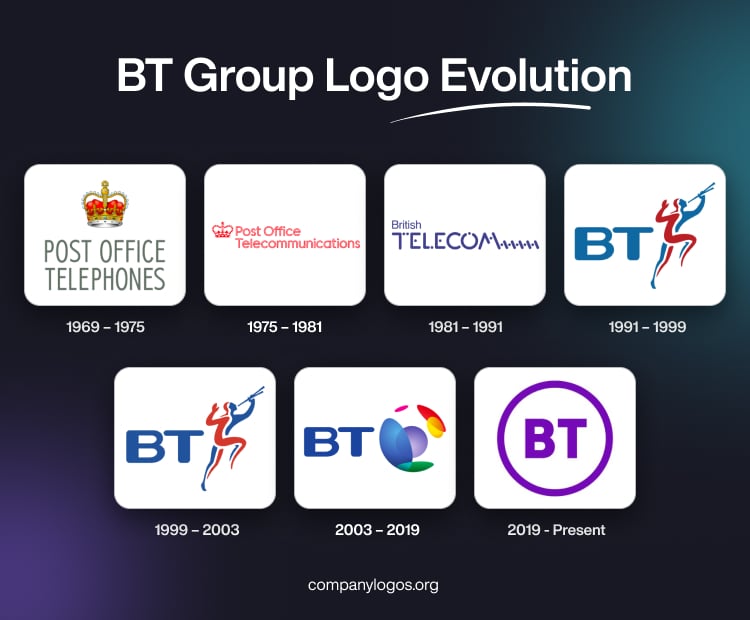
The BT Group is renowned as one of the oldest and most influential telecommunications companies in the world. Established in the United Kingdom in 1969 as Post Office Telephones, the company offers a multitude of products and services, such as mobile telephony, digital TV, IT and network services, and internet products, among others. The company changed its name to British Telecom in 1981 and to BT in 1991.
Its visual identity is deeply tied to its legacy, technological innovation, and shifting market dynamics. Over time, the various logo iterations undertaken by the BT Group reflect the company’s strategies, aspirations, and the rapidly evolving communications landscape. The article delves into the various logo iterations brought out by the BT Group, among other details of the company.
The Genesis of the BT Group Logo (1969 – 1975)
The year 1969 saw the establishment of the Post Office Telecommunications as a division of the General Post Office. The division used to be called Post Office Telephones due to its mandate of managing telephone services.
The initial BT logo featured a crown emblem and a wordmark “POST OFFICE” and “TELEPHONES” in two levels using a strict sans-serif typeface in grey uppercase. The crown emblem in orange and red represented the British roots of the company, given that the Post Office was established by King Charles II in 1660. Additionally, the logo embodied a sense of authority and reliability befitting a public institution.
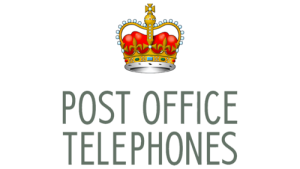
(1975 – 1981)
In the 1975 logo iteration, subtle refinements to the original logo were introduced. While most elements of the original emblem remained, the typography became slightly modernised. The crown in a red and white colour palette appeared to the left of the wordmark rendered using an outlined sans-serif typeface in a title case.
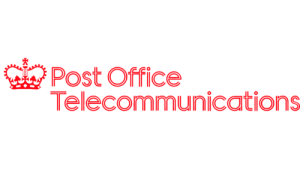
(1981 – 1991)
The 1981 rebrand was more than a visual refresh. In fact, it was a fundamental shift corresponding with the emergence of British Telecom as a separate entity from the Post Office. The new logo showcased a custom nameplate with “British” and “Telecom” in two levels. The upper level showed the word “British” in a thin sans-serif typeface, while the lower-level word “Telecom” in uppercase had five diagonal lines and five dots after the letter “M”.
The nameplate was shown in purple to symbolise creativity and balance. Also, the stylised letter “T” had two dots replacing the right portion of its horizontal bar, while the middle bar of the letter “E” was replaced with a dot.
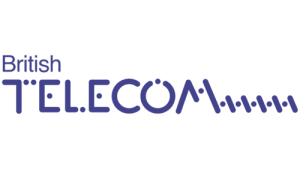
(1991 – 1999)
In 1991, the logo in red and blue saw a departure from earlier designs with the introduction of the Piper logo, which was incidentally conceived by the famed design house Wolff Olins. This abstract emblem depicted a stylised human figure playing a flute.
The Piper was meant to convey creativity, innovation, and a more human brand image. This era also coincided with the widespread association of “BT” as the company’s shorthand. It saw reinforced efforts to connect emotionally with consumers during a time of rapid market change and product expansion.
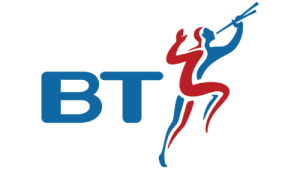
(1999 – 2003)
From 1999, the logo underwent a subtle change. It blended elements from the Piper emblem with more contemporary styling. It was meant to bridge the gap between its existing heritage and its emerging identity as a leader in telecoms and new technologies.
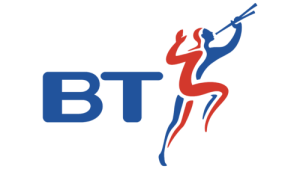
(2003 – 2019)
The new millennium brought about the iconic Connected World logo in 2003. It featured the “BT” wordmark in a sans-serif typeface with rounded corners paired with a multi-coloured globe of abstract shapes. This vibrant and future-focused design represented BT’s emerging global reach and digital capabilities. It signalled BT’s evolution from a traditional telecom provider into a multifaceted digital powerhouse. The logo’s energetic palette and flowing shapes were meant to communicate innovation and digital transformation.
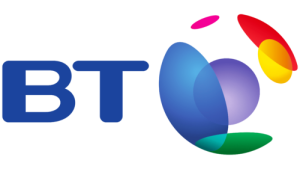
(2019 – Present)
In May 2019, BT introduced its current logo, a minimalist design with the letters “BT” set within a simple, bold circle. This stripped-back identity was strategically chosen for timelessness, flexibility, and clarity across both digital and physical platforms.
The focus on indigo as the core brand colour was supported by pink accents and a distinct “Portal” brand motif. It underlines BT’s role at the gateway to modern technology. This minimalist change was not just a visual update but marked BT’s transition from a “plain old telephone company” to a modern technology brand.
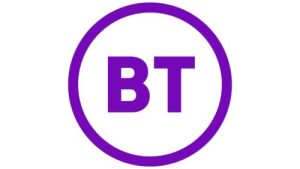
The Elements of the BT Group Logo
Font
The wordmark in the BT Group logo is written using a bold sans-serif typeface with clean lines and distinct edges and corners. The typefaces closest to it are Neogram Heavy and Heading Pro.
Colour
The colours used in designing the BT Group logo include blue, red, and purple. The red colour symbolises the English crown and its patronising of the company; blue speaks of technological advancements in communications. Finally, purple relates to development and its influence on people.
The History of BT Group
The origins of the BT Group can be traced back to the founding of the Electric Telegraph Company in 1846 by John Lewis Ricardo and Sir Charles Wheatstone. It marked the beginning of the UK’s nationwide telegraph network and rapid infrastructure expansion using railway lines. In 1870, the British government nationalised the telegraph industry and incorporated these networks under the General Post Office (GPO).
The GPO would eventually embrace telephone technology following Alexander Graham Bell’s 1876 invention. And in 1912, the GPO consolidated its control by taking over the National Telephone Company. Major technical milestones included the launch of the first transatlantic telephone cable in 1956, which helped establish Britain as a pioneer in global communications.
The Post Office Act of 1969 transformed the GPO into a public corporation called Post Office Telecommunications, which set the stage for later changes. British Telecom emerged as a new brand in 1980, and the British Telecommunications Act of 1981 fully separated telecommunications from the Post Office, thereby making British Telecom an independent entity.
In 1984, British Telecom was privatised and became British Telecommunications plc. This marked the UK’s first large-scale privatisation of a state enterprise, as half its shares were offered to the public. Subsequent regulatory reforms, including the 1984 Telecommunications Act, opened the market to competition. It was initially overseen by the new regulator Oftel.
Within a landscape of growing competition and technological change, BT invested heavily in digital technology. It launched the world’s first public digital telephone exchange in 1979 and public video conferencing in 1991. The company undertook strategic global partnerships through the 1990s. And along with significant job restructuring, it attempted to position BT as a major international player. However, mounting debts, partly due to the purchase of 3G mobile licenses, culminated in a £30 billion debt crisis. This led to the divestment of several assets and the 2001 spinoff of its mobile business as mmO2 (O2).
In November 2001, BT Group plc became the holding company for British Telecommunications plc. The 21st century has seen BT focus on network access, retail, and global services. In doing so, it established Openreach in 2005 to manage national network access and facilitate market competition. In 2016, BT dramatically strengthened its mobile offerings by acquiring EE, the UK’s largest mobile operator.
Most recently, BT has prioritised digital infrastructure to deliver full-fibre broadband to 25 million UK premises by 2026. In 2025, the BT Group remains a leading force in telecommunications. It operates across about 180 countries and offers a full suite of services in fixed-line, broadband, mobile, television, and IT. The evolution of the BT Group reflects a continual cycle of innovation, regulatory adaptation, and strategic transformation from its earliest telegraph roots to its current status as a global digital communications leader.
Interesting Facts About BT Group
- The origins of the BT Group date back to 1846, when the Electric Telegraph Company, the world’s first public telegraph company, was founded.
- BT was officially formed in 1980 as a separate entity from the Post Office. It became fully privatised in 1984, ostensibly one of the first major UK government privatisations under Prime Minister Margaret Thatcher.
- BT Group serves customers in over 180 countries, which makes it one of the largest telecom service providers in the world.
- It has major business operations outside the UK, especially in Europe, the Americas, and Asia-Pacific, through its BT Global division.
- BT was the first company in the world to offer a paid TV over broadband service in 2006. It did so by launching BT Vision (now BT TV).
- In 1985, the BT Group introduced the world’s first international digital telephone exchange in London.
- BT researchers were instrumental in developing fibre optics and the foundations of the modern internet.
- The BT Group was once synonymous with the classic red phone box and the “Speaking Clock” service in the UK.
- The “BT Tower” in London (formerly Post Office Tower) is one of the UK’s most recognisable landmarks and was a hub for microwave telecommunications.
- The BT Group owns Openreach, the infrastructure arm responsible for maintaining the UK’s broadband and telephone network. It is used even by its competitors like Sky and TalkTalk.
- It also operates BT Sport, which is a major UK sports broadcaster with rights to the UEFA Champions League, Premier League, and more (now merging with Warner Bros. Discovery’s Eurosport UK).
- The BT Group has committed to becoming a net-zero carbon emissions company by 2030 for its own operations and by 2040 across its supply chain.
- The BT Group was one of the first UK companies to adopt science-based climate targets aligned with the Paris Agreement.
- BT’s Adastral Park research facility in Suffolk is one of Europe’s leading science and tech innovation campuses.
- The BT Group holds thousands of patents, including early work on video compression, optical fibres, and cybersecurity.
- The BT Group is listed on the London Stock Exchange and is a constituent of the FTSE 100 Index.
- The BT Group has a customer base of over 30 million across various services — mobile, broadband, TV, and enterprise solutions.
Finally
The BT Group’s logo iterations are more than mere symbols. They reflect shifts in British culture, advancements in technology, and changes in the company’s strategic direction. Besides, the logos showcase the journey of the company over the years to become one of the behemoths in global telecommunications.